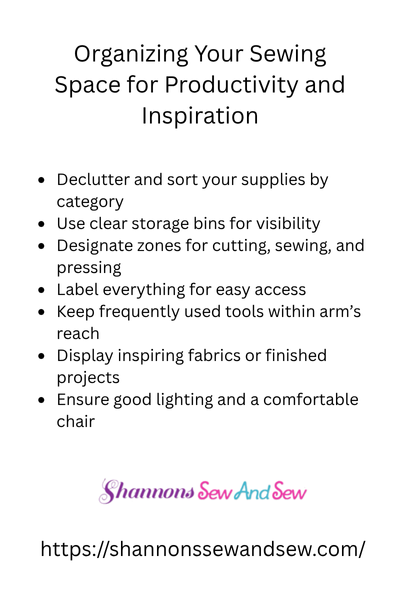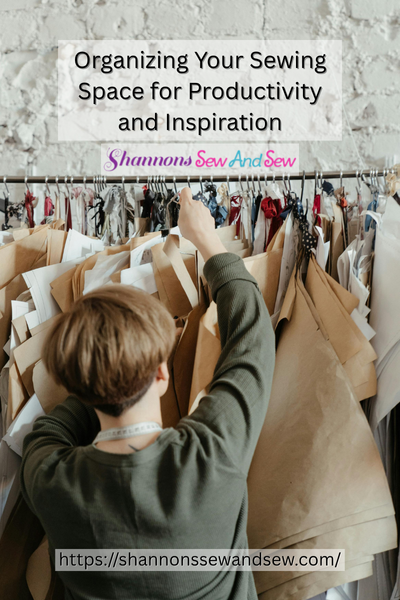Supplies And Equipment
Organizing Your Sewing Space for Productivity and Inspiration
Organizing your sewing space for productivity and inspiration isn’t just about tidying up—it’s about setting yourself up to actually want to spend time there. Whether you’re working on a complex quilt or just patching up your favorite jeans, the way your space feels can either boost your creativity or totally block it. I’ve been there. One day you’re brimming with ideas, and the next you’re avoiding your sewing room like it’s the dentist’s office.
Let’s change that, shall we?
Read More About Organizing Your Sewing Space for Productivity and Inspiration

The Great “Where’s My Seam Ripper?” Mystery
So, true story. I once spent forty-five minutes looking for a seam ripper. I had three of them. They were all MIA. You know where I found the first one? Inside a coffee mug, under a pile of fat quarters. The other two? One was in my button jar. Don’t ask. The other was under the dog bed. (Okay, do ask—apparently, my pup has a thing for shiny objects.)
That’s when I realized that organizing my sewing space wasn’t about being Pinterest-perfect. It was about saving my sanity—and my time.
Read More About Organizing Your Sewing Space for Productivity and Inspiration

Why the Way You Organize Matters
Here’s the thing: when your workspace works with you, not against you, you actually want to be in it. Organizing your sewing space for productivity and inspiration helps cut down the frustration and cranks up the joy. You’ll find yourself starting more projects—and finishing them too.
Ever heard that saying, “Clear space, clear mind”? Yeah, that applies here. But don’t worry, I’m not about to suggest you turn your sewing room into a sterile lab. Quite the opposite, actually.
Think Function First, Then Style
When I first started getting serious about organizing my sewing space, I made the rookie mistake of buying a ton of matching bins and labels. Everything looked Instagram-worthy for about a week. But it wasn’t functional for how I actually sew.
So here’s my not-so-secret advice: organize by how you move when you work.
- Do you always reach for scissors right after pinning?
- Is your machine in a good spot where you’re not bumping into things every five minutes?
- Can you grab your thread without having to dig through a drawer?
Start by noticing your habits. Then build your setup around you.
Your Tools Deserve a Home (That Makes Sense)
Let’s talk tools. You’ve probably got a rotary cutter, a few different rulers, fabric markers, pins, thread snips—the list goes on. These little things love to vanish like socks in a dryer.
I set up a pegboard behind my sewing table, and honestly? Game changer. I can see everything, nothing’s hiding, and it’s weirdly satisfying. Not into pegboards? A rolling cart or an old toolbox can do the trick too. Just make sure it rolls with your workflow.
Fabric Storage That Doesn’t Make You Cry
Stashing fabric can be the trickiest part of organizing your sewing space for productivity and inspiration. If you’re anything like me, you’ve got everything from big ol’ yards to tiny scraps that are “too cute to toss.”
I use clear bins for bigger cuts—because if I can’t see it, I forget it exists. Scraps go into color-coded baskets (okay, fine, laundry baskets), and I’ve got one drawer that’s just for “project piles”—you know, when you start gathering stuff for your next masterpiece.
One friend of mine stores his fabric rolled like little sushi in a drawer, and I gotta say, it looks amazing. Try a few systems until something clicks.
Light, Color, and Vibes
Don’t underestimate the vibe factor. Organizing your sewing space isn’t just about drawers and shelves—it’s about how the space makes you feel. Add lighting that makes you excited to sit and sew. Bring in a plant. Hang art. Make it yours.
One thing that surprised me? Adding a small speaker to play music or podcasts turned my sewing sessions into something I looked forward to, not just another to-do list item. It’s those little touches that make your space a place, not just a corner.
Reset Between Projects
Quick tip: at the end of a project (or even mid-project, if I’m hitting a wall), I do a 10-minute reset. Nothing fancy—just putting tools back where they go, tossing scraps I won’t use, maybe vacuuming up those mystery threads that somehow end up everywhere. That small effort makes starting the next project way smoother.
Organize Your Sewing Space for Creativity That Flows
Here’s the bottom line—organizing your sewing space for productivity and inspiration should feel good. It should make your time at the machine more fun, not more stressful. It’s not about being perfect. It’s about creating a space where you can actually enjoy what you’re doing.
So go ahead, tweak things, move stuff around, make mistakes. Your space should evolve with you. And hey, if you ever find your seam ripper in the fridge (yes, it’s happened), just know you’re not alone.
Now tell me—what’s one thing you’ve done to make your sewing space feel more like your own?




















